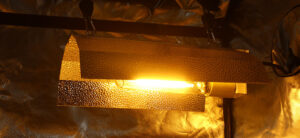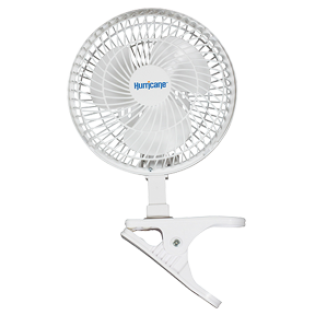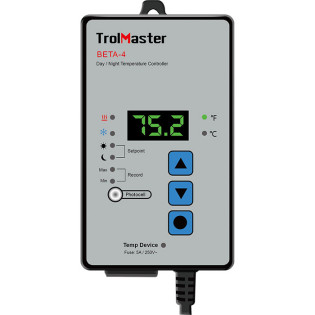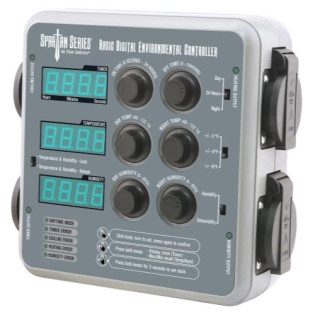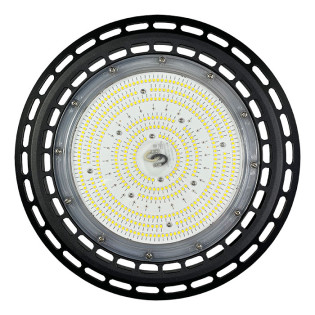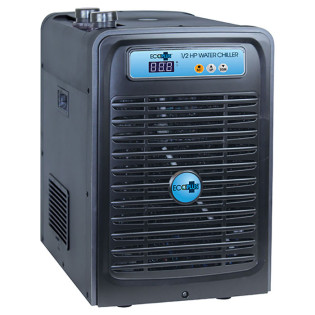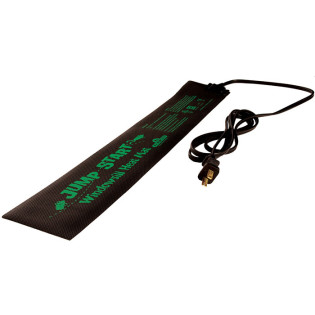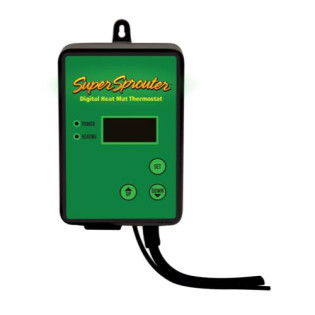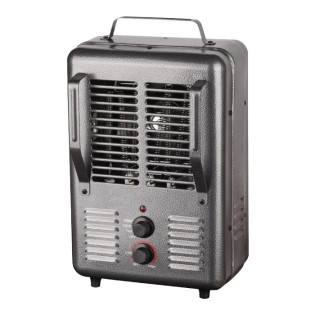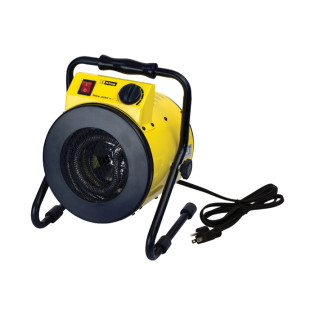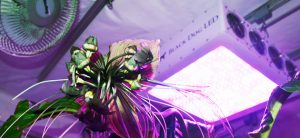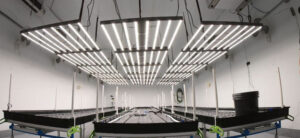
Managing grow tent heat is one of the more difficult, frustrating aspects of indoor growing.
Not too hot and not too cold; many of the plants we grow are just like us and prefer similar temperatures - between 65 to 85 degrees Fahrenheit.
They also hate temperature fluctuations, which means you need to do your best to keep your daytime/nighttime temps relatively similar. There will be some difference, but huge swings can stress them out as plants have to adjust.
Failing to fix an issue with your grow tent being too hot will weaken your plants nutrient uptake and leave them more susceptible to diseases before they eventually die.
Let's take a look at some common grow tent heat problems, and how to remove this heat from your grow tent or grow room.
Never Grow Without A Thermometer / Hygrometer
A thermometer and hygrometer are essential to every indoor grow room. Locking your plants into their preferred temperature and humidity ranges is crucial for nutrient uptake.
If your vapor pressure deficit (VPD) is off (air temp + leaf temp + relative humidity), then your plants will either uptake too much or not enough nutrients. It’s common to see calcium deficiencies because transpiration is largely affected.
If this happens, you can use a cal-mag supplement. But you will need to address the root cause eventually as well - which is grow tent heat.
Let’s say you’re feeding 250 ppm or .5 EC of nutrients a day, but your VPD is too low so your plant isn’t drinking much from its grow media and you start seeing deficiencies. So you raise nutrients to 300 ppm to combat this.
However, if you had just raised your temperatures, lowering your humidity, your plant would have started drinking more water from it’s media, and could have stayed at 250 ppm saving money on nutrients.
Dual thermometer and hygrometer units are very affordable, and they will end up saving you money and eliminating a host of potential problems. Temperature directly affects humidity levels and when they are off, you open yourself up to a domino effect of one problem after another problem.
This brings up an important lesson. Unless, you can always get to your grow tent, any time of day, start automating environmental factors as much as possible.
Get a controller that automates your lights schedule, temps, humidity, and adjusts your ventilation system so your VPD is always perfect.
You could purchase each of these individually, or make your life easy with a multi-function grow room controller.
This will control all aspects of your grow room with the same controller.
Understanding Your Grow Lights & Heat They Produce
Your grow lighting system is going to be the largest contributor to your grow tent’s temperature.
So if you find yourself struggling with temperature issues, you need to look at your lighting setup first.
All lighting systems have unique ways they affect your grow room’s temperature. To successfully control temperatures, you need to know how your lights do this.
What you need to know: To spare you a headache, know that for the most part, more watts equals more heat regardless of what light is producing the watt. Remember this rule: Watts in = Watts out.
A 600 watt LED at the wall, will generate around the same amount of heat as a 600 watt HID. Watts does not mean the amount of light produced.
LEDs are considered to produce less heat because you need fewer watts to match the amount of light an HID produces - they’re more efficient.
Decreasing Temperature In Your Grow Tent Or Room
It seems like the majority of indoor gardeners struggle with high temperature, so let’s look at ways you can decrease your temperature.
Setting Up Your Ventilation System
Step one should be ensuring your ventilation system is dialed in. You absolutely need a means of removing hot, stinky air from the grow tent.
This can be as simple as an exhaust fan, carbon filter, and ducting. It is best to duct the air either out a window or into a hole in the ceiling to the attic, to ensure you aren't heating up the room your tent is in.
You can leave your exhaust system running 24/7 if you really struggle with temperature, or set it up to flip on every 5-10 minutes. Your individual environment will likely differ from the next growers.
You'll need to watch how your temperature changes by using a ventilation system and act accordingly.
We have an entire guide on setting up your grow tent ventilation. This is an essential part of grow tent growing, so start there.
Grow Room & Tent Air Conditioners
If high temperatures are wrecking your indoor garden, there is no better way to quickly bring the temperature down than an air conditioner.
You can easily place them either in the grow tent or some models allow you to have them outside the tent while ducting the cool air in.
For more information on air conditioners, read our guide on choosing and sizing the best one for your growing space.
Reservoir Chillers
Many hydroponic setups keep the reservoir outside of the tent as dangerous algae can grow in the water when the temperature rises above 70 degrees.
However, if you’re using a Deep Water Culture (DWC) system then this means your plants' roots are directly sitting in the reservoir, so it will be in the tent. Reservoir chillers are crucial in DWC and other hydro setups.
Heating Life Hacks
Sometimes, all we need to do is lower our temperatures only a little bit, so here are my favorite life hacks for lowering temperatures without having to spend any money.
- Run your lights at night — This one can also save you money as well, as some power companies have lower nighttime electricity rates. Remember to watch for light leaking into your grow tent as this can cause serious damage to plants in flowering. Most flowering plants need a minimum of 12 hours of uninterrupted darkness.
- Change light schedule — Many growers are seeing great results running their plants under 18, 20, and even 24 hours of light a day when in the vegetative growth stage. However, the 16/8 light schedule is a classic for a reason. While running your lights longer may increase yields, you may end up hurting yields if your temperatures get too high from the extra hours of light.
- Plan your grows according to season — Most plants can tolerate at least 10-15 degrees more heat when they are in veg compared to when they are flowering, but flowering plants want more light causing a catch-22. If you’re fighting heat in flowering, try germinating in mid-late summer so the plant is flowering in the winter.
- Use an oscillating fan or clip-on fan — Sometimes all you need to do is get stagnant air moving around in your tent. Most people have a small fan or two lying around in their house. Or, just grab a clip-on fan while you're here. They're cheap and don't take up much space at all, and will help disperse heat.
- Changing Where You Grow — Heat rises, and if you live in a two-story home and/or have a basement, then you’ll notice a large difference in temperatures when moving through the house. I can reduce my grow tent’s temperature by over 10 degrees simply by moving it from the upstairs to the basement.
Potassium Silicate
If I could only use one supplement other than my base nutrients, it would be silica.
Silica translates into hardier plants that can fight diseases, pests, and handle extreme temperatures better. I wouldn't grow without it to be honest.
It obviously won't decrease grow tent temperature, but it will help your plants be more resistant to high temperatures, and other things that can stress them out.
Check out our complete guide on the importance of silica for more information on this plant superfood!
Increasing Temperature In The Grow Tent Or Room
If you are growing during winter, it is definitely possible you will struggle to keep temperatures up in your grow tent.
Here are a few ways to increase heat in your grow tent and keep your plants happy and thriving!
Run Your Ventilation On The Same Schedule As Your Lighting
We often get caught up in only monitoring our daytime temps and completely forget about our temps at night.
But this can spell smaller plants, reduced yields, and even dead plants. With high intensity lights, we get a lot of heat so we set up strong ventilation systems.
If you don’t turn them off at night you might create cold temperatures and extreme temperature spikes when the lights turn back on.
Plugging your intake or exhaust fan into a fan speed controller that will automatically increase or decrease the fan’s speed based your custom settings is a must have.
The more you can automate your grow room, the better. I cannot stress this point enough.
Seedling Heat Mats
There is no other time when a plant is more vulnerable to cold temperatures than when they are germinating and in the seedling phase.
Plants can take an incredible amount of damage and live, but start touching the roots and you’re in for trouble.
Seedling heat mats are used mostly for germinating as many plants need a soil temperature around 70 degrees Fahrenheit for the seeds to sprout. But don’t remove them just yet!
Since seedlings have such a small root system, they can really benefit from their root system in their preferred temperature range until they develop.
Grow Room Heaters
Electric heaters are a popular option for many indoor gardeners, and you can find horticultural specific heaters that are designed for the growing environment.
In fact, many air conditioners feature a heat pump. So you can use your AC during the summer, and the heat pump during winter!
Add More Grow Lighting
Instead of adding an electric heater or turning your house’s thermostat up think about adding more lights.
That is if you can.
With HID, CHM, and top of the line LEDs, it easy to provide too much light to plants which can damage plants and reduce yields. Yes, your plants can be sunburnt.
Nailing down your waterings & feeding, grow media, introducing CO2, temperature & humidity will lead to stronger plants that can tolerate more light.
If you are using a lower-powered T5 or LED, you may consider using a hotter CMH or HID style grow light during colder months.
The relationship between heat and your ventilation system
The reality is, temperatures are directly correlated to how effective your ventilation system is. If your grow tent doesn't have a simple ventilation system, your plants will suffer.
Our complete grow tent kits come with a high-quality ventilation system, making this a no brainer. But if you have really hot lights, you'll always struggle to some extent with temperature.
Consider investing in a cooler, more energy efficient grow light from the start and you won't struggle much at all.
Check out our complete guide on atmosphere and ventilation for more information on creating the perfect environment for your plants!





